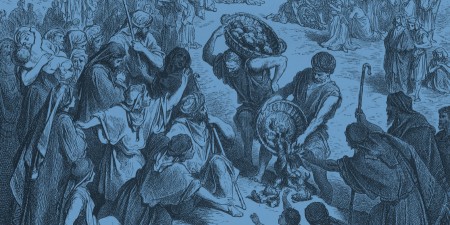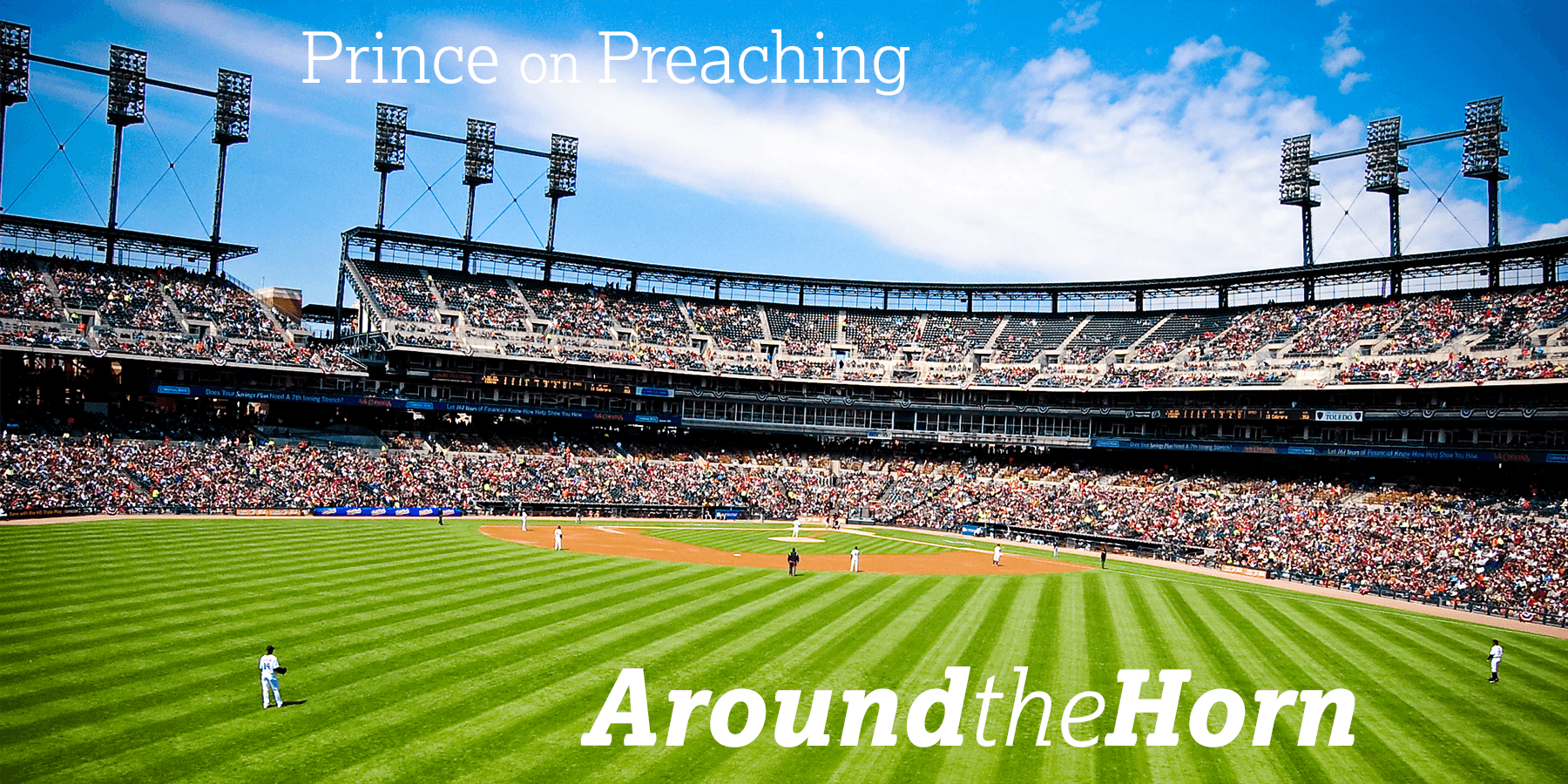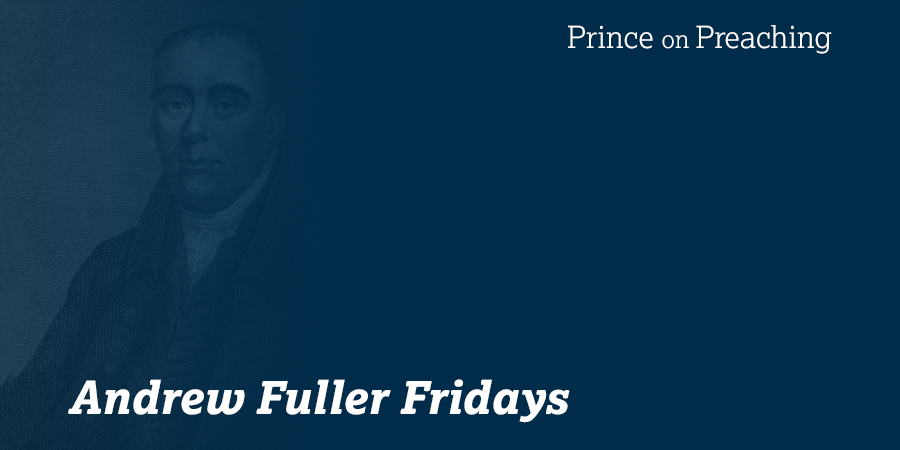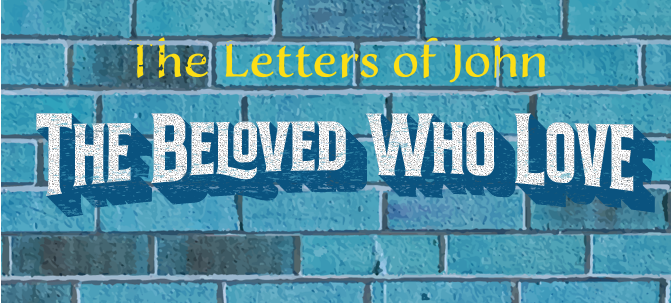
Whether we are reading and applying the Bible with adults or with children, the answers to the questions “What does this text mean? What does it teach about Jesus? And How do I need to respond?” are the same. Just as we are misled when we read the Bible as if it were about us instead of Jesus, we mislead children when we teach them as if it were about them instead of Jesus. If we are not careful, we can actually teach our children to misread the Bible. We have all likely seen colorful storybooks referring to ‘heroes of the Bible’ but children need to see how all these stories (such as David and Goliath or Queen Esther) have a place in the bigger story and all point ahead to the Hero, Jesus Christ. When thinking about teaching the Bible with Jesus as the Hero, you might imagine that it would be impossible to fumble a lesson on one of His miracles. Surely He will be the hero in that story! Unfortunately, particularly in children’s lessons, much of the time these miracles are taught in a text-to-child approach that has the goal of an immediate moral or child-centered lesson that is abstracted from the Gospel. In such an approach, though children learn that Jesus did a miracle, that miracle is not tied to His greater work. One miracle story that is especially prone to misapplication in children’s lessons is John’s account of Jesus’ feeding of the 5000, especially because his account mentions a boy. (Caution: Just because a child is mentioned in a story doesn’t mean that child should become the main point of the lesson!) A typical text-to-child approach goes like this: While these points are true, the challenge with this lesson plan is that it doesn’t truly deal with the main purpose of John’s account. Here’s a better approach: Who is this text saying is out of order with the purposes of God? In this story there is no person shouting threats like Goliath, or scheming plans of destruction like Haman. So who is the bad guy of this story? In this story, the bad guys are not bad in the sense of raging openly against God; instead they are ‘bad’ in the sense that they are insufficient. Here, it is more a matter of neediness than it is of open wickedness – the people have a need for food, and everyone (disciples included) have a need for faith. When Jesus turned to Philip and asked “Where are we to buy bread, so that these people may eat?” he thrusts upon Philip a dilemma that is unsolvable in the mind of disciples. He is setting them up to show them His power. But a significant portion of the crowd, even after seeing Jesus as the powerful Provider, failed to come to Him to provide them eternal life. They were in need of this life, and didn’t even know what they needed. They turned away and stopped following Him. (John 6:66) They did not recognize their larger needs, nor come to Jesus in faith as the solution to those needs. In what ways am I prone to be out of order with the purposes of God in a similar manner? We, too, are lacking. We do not even have the ability ultimately to provide our own physical needs, let alone the spiritual needs. Often, we do not even realize what it is that we really need, and are dependent upon God to open our eyes to see our need so we can call out to Him. We need to help our children identify with the hungry crowd (instead of with the one boy who does have food). This is not difficult, and can even be done with small children. How does it work? Simply ask kids questions like these: What did the people need? [food] Do you need to eat food each day? [yes!] The people also needed words from Jesus. Do you need Jesus’ words? [yes!] The people also needed forgiveness for their sins. Do you need forgiveness? [yes!] The people also needed eternal life. Do you need eternal life? [yes!] So did the people have what they needed without Jesus? [no!] Do you? [no!]
With older kids, you could guide them in making a list of the crowd’s needs. They’ll instantly list food as a need, but might take a while to come up with the spiritual needs. Then you can guide them to come to the understanding that they, too, are needy. Get creative! Use object lessons or activities. Make it memorable! But have the goal of getting children to truly grasp the truth that they do not have what they ultimately need. Our goal is not to develop self-esteeming, fully independent, self-confident children in the day of judgment, but rather, kids who are depending on and found in Jesus. We do not want our kids to be like the church of Laodicea that said “I need nothing” even though they were “wretched, pitiable, poor, blind, and naked.” (Rev. 3:17) Instead, we want them to see their spiritual state of need and come to Jesus. What is this text saying about what must be done, or who we must be, to abide in the purposes of God, and how do I fail to do what it says? To take care of what is lacking, we must come to Jesus the provider. Every time we feel self-sufficient apart from Jesus we are deceived and every time we are calling out to Him in our need, we are doing exactly what we need to do. What heroic person or heroic action is walking in line with the gospel in this text, and how does he or she (or the action) remind me of Jesus? In some miracle stories of Jesus, you can skip directly to Finding the Hero – Jesus. But in this story, there is one ‘lesser hero’ we should mention – and it’s not a person. When the challenge is a threatening enemy like Goliath, the solution is a conqueror. But when the challenge is an insufficiency, such as in the case of hunger, the solution is what satisfies that need. What ‘saves the day’ when you’re hungry is food. In this story, what meets the physical need is a miraculous meal of bread and fish, with twelve baskets of leftovers. The meal itself took care of their hunger and replaced it with satisfaction. The satisfaction from the meal didn’t last. The bread the people ate was a temporary fill for their bellies. They came searching for Jesus the very next day. Jesus makes it clear they are seeking after more bread. But the earthly meal for earthly bellies points to a greater satisfaction for a greater need. What is the relation of this text to the character and work of Christ? Jesus Himself is what the people truly need. (And he is what we and our children truly need as well.) “I am the bread of life, whoever comes to me shall not hunger, and whoever believes in me shall not thirst.” (John 6:35) In the Old Testament, Moses gave manna to the people so they would live and escape starvation. Jesus shows them that the story of the manna in the wilderness points to the Father giving Jesus to us so that we might have eternal life and resurrection through faith in Him. Jesus Himself is the bread that came down out of heaven. He is the solution to our greatest needs. What does Jesus perfectly do or fulfill in this text that we could not do for ourselves? Jesus gives life. We cannot even give ourselves temporary life; there is no way we could ever provide for ourselves eternal life. No man has ever conquered death but Jesus. Apart from Christ, the dilemma of our need for eternal life is a more unsolvable problem than the feeding of 5,000 people that seemed impossible to Philip. It is only in Jesus that we can be given the eternal life we need. How does Jesus resolve the redemptive theme of this text? How does Jesus give us the resurrection and eternal life we so desperately need? He does so with his own body. “I am the living bread that came down from heaven. If anyone eats of this bread, he will live forever. And the bread that I will give for the life of the world is my flesh.” (John 6:51) The bread of life was broken – nailed to a cross – a physical, heavy, material body of actual flesh sacrificed for sinners. The body of the Son of God was spent to provide the eternal life we could never obtain any other way. Just as Jesus used a small amount of bread to satisfy a crowd of 5,000, in the same way the He gave His one body to provide life to the multitudes who believe in Him. How does Jesus complete the story of this text? Jesus says that the one who comes to Him will not hunger and the one who believes in Him will never thirst. By rising from the dead, Jesus shows that He actually has the eternal life He is offering and that death cannot put an end to His promises. His resurrection is the proof that He is the bread of life. How will Jesus’s return complete the story of the text? Jesus promises not only eternal life, but a resurrection. Why is a future resurrection for all who trust in Christ so seldom taught to children? It is because we don’t speak much to them about death, either. But death is real, and so is resurrection, and our children need to hear about both! Jesus’ promises of eternal life are tied to promises of resurrection. “For this is the will of my Father, that everyone who looks on the Son and believes in Him should have eternal life, and I will raise him up on the last day.” (John 6:40) “He who eats My flesh and drinks My blood has eternal life, and I will raise him up.” (John 6:57) Four times in this passage Jesus promises to raise up those who come to Him (vs 39, 40, 44, 54). How does Jesus’ return complete this story? Trust in Christ, and you’ll see the answer! Resurrection is not just something He will make sure happens to you, but is something He will personally do Himself. The completion of this story is another meal after the dead in Christ rise called the marriage supper of the Lamb where his people will be satisfied forever (Rev 19:9). How can you teach these great truths to children? Small children have difficulty thinking in symbolism and analogies. But they can understand much of what Jesus is saying. Simply help them to understand that their bellies need food when they’re hungry, but that only lasts a short while. But their whole-selves need Jesus forever. If a child goes away from your lesson saying “I need Jesus forever because he died for people’s sins,” you have planted in them a truth principle that can help guide them to eternal life in Christ. In teaching children, it is a good moment when they start saying, “You always seem to talk about Jesus dying on the cross and rising again.” The cross and empty grave are the focal points of the whole Bible, the center of the Gospel, and all Scripture is interpreted rightly in light of them. The myriad of Bible stories gives opportunities to approach these deep truths from many angles to show their multi-faceted splendor. The miracle of the healing of the leper shows how the cross triumphs over our uncleanness, the miracle of Jairus’ daughter raised to life shows how the cross triumphs over death, and here in the miracle of the feeding of the 5,000, we see how Jesus eternally supplies through the cross what we are lacking. Why did Jesus have to be crucified and resurrected for this text to bring me joy? It is the beauty of what Jesus did in the horrific moments of the cross that Jesus is referring to when he says his flesh is the bread given for life. It is the truth that He conquered death, rising from the grave, that shows He has the power to give what He promises. He is alive to carry them out. How can I conduct my life in line with the gospel and render the obedience of faith? In light of the death that is impending for each and every person, and the gift of eternal life offered by Jesus, the only reasonable response is to run to Him as the sole provider of eternal life. Do not worry if this does not seem as applicable in the moment to a small child as some moral lesson about sharing. Do not expect children to immediately and deeply grasp all the truths of the gospel. Instead, principle upon principle, lay the foundation for an understanding of their need for Jesus and how Jesus can meet that need with eternal life. How can I apply my life to the gospel truth of this text? Oh, how easy it is to be involved in so many other pursuits other than the pursuit of Jesus and His ways! This is a re-focus text. This world is temporary, just as a meal of bread and fish only satisfies for hours. But Jesus has eternal life that will never pass away. The application is not to think ‘just a bit more’ about Jesus, but instead to live for Him. “Do not work for the food which perishes, but for the food which endures to eternal life.” Conclusion In summary, by reading and applying the Bible with Jesus as the Hero, you come up with this lesson plan: This is a lesson that can be taught to toddlers or high school students. It is faithful to John’s purposes in the account of the feeding of the 5,000. Finally, it aims at children’s hearts to lead them to the cross, where they can eat of the bread of life and live forever! Other Posts in this Series: A Simple Guide to Reading and Applying the Bible with Jesus as the Hero
Find the Bad Guy—You
Find the Heroic—Sinner
Find the Hero—Jesus
How Can I Obey in Christ?—Faith



